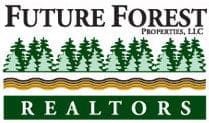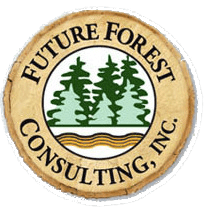Over 500,000 hunting licenses are issued per year in New York State. If you are one of the many hunters that enjoy taking to the woods each season, you may want to buy some of your own. Hunting land can be a great investment.
It can also improve the quality of your hunts and life. Increased public interest in recreational hunting makes it tough to find uncrowded hunting grounds nowadays. Privately owned hunting land provides its owner solitude.
If you want to learn how to buy hunting land in New York, you came to the right place. In this brief guide, we discuss everything you need to know about buying hunting land in Western New York. Read on to learn the details.
Animals to Hunt in New York
Before finding your ideal tract of private hunting land, you should first know some common animals to hunt. The following animals are all legal to hunt in New York during the appropriate season.
On private land, the laws for hunting animals may differ from those for public land. For some animals like turkeys, you still need a license. For others like small game, you may not need a license for hunting on private property.
Small Game
Small game include things such as quail, rabbits, reptiles, amphibians, pheasants, squirrels, and grouse. Most of the time the season for these animals starts in October, except for some areas where it starts later in November.
You can find the full list of seasons for small game as well as information about hunting seasons for all other animals by consulting the New York Department of Environmental Conservation’s website.
Deer
Whitetail dear is the most common type available for hunting in New York. Most areas of New York offer dear hunting in the fall and winter. Extended archery and muzzleloader seasons are also an option for avid hunters.
The number of deer you can take all depends on the type of hunting license you buy. Some special licenses also allow you to take more than one deer per day. Consult with your local game warden for more details about bag limits.
Bear
Black bears can be found in many regions of New York. Archery and muzzleloader bear hunting seasons start earlier and run later than hunting season for conventional firearms. Each tag holder is allowed one bear per year.
Wild Turkeys
Wild turkeys are common around upstate New York. There are both spring and fall hunting seasons available for you to enjoy. You can only hunt wild turkey during daylight hours during the fall.
Waterfowl and Migratory Birds
Waterfowl such as ducks and geese are abundant in New York State. As are other migratory birds such as woodcock and snipe. Hunters must have a valid tag, pay attention to seasonal dates, and register for a program.
Fur-Bearing Mammals
Fur-bearers such as fox, coyote, and raccoon are common and valuable animals to hunt in New York. Your hunting license only allows you to use a rifle, bow, or muzzleloader. To use traps you need to apply for a trapping license.
What Makes Good Hunting Land?
Now that you know the types of animals available for you to hunt, it is time to choose the appropriate land to purchase. You need to consider what animal you want to hunt to ensure your property can sustain a healthy population.
The following are some considerations to make when choosing your ideal parcel. Good hunting land is all in the eye’s of the beholder but consider the following attributes.
Parcel Size
To implement a successful management plan for your hunting land, you first need to know the size of the parcel you will be buying. Larger parcels are conducive to larger populations of target animals.
They also cost more to purchase and manage. Expect to invest large amounts of money, time, and manpower in your hunting land. Expect to buy a large parcel over 10 acres to facilitate a healthy hunting population.
Degree of Isolation
You may want a convenient parcel of land close to your city home, or may already be living a life of rural isolation. Either way, keep in mind that hunting parcels in remote areas tend to have healthier animal populations.
If your land abuts a residential or commercial area, you may face more restrictions. Try to find a parcel of land away from major population centers. Remote areas are the most conducive for private hunting land.
Available Habitats
Every animal needs a specific habitat to survive and thrive. Deer and bear populations love forested areas. If targeting these animals, you need to ensure you have healthy forest habitats on your land.
Other animals such as ducks need a water source such as a lake or pond. Hike your potential land interests and gauge the health of their habitats. Try to go during hunting season to gauge the extent of existing populations.
Road Access
How accessible is your target land? Some hunters prefer a long hike with all of their gear into an isolated area. Others may need road access to facilitate their hunts. Hunting land in roadless areas tends to be cheaper.
You may also be able to get an easement from a neighbor to build a small road or driveway across their property to access your land. Either way, make sure to inquire about road access when assessing your land choices.
Laws
There are all sorts of county, municipal, and local laws to factor in when buying hunting land. You may need special permits to turn raw land into private hunting land.
Consult with your real estate agent or local zoning official to learn more about specific laws. Purchasing hunting land requires more legal foresight than buying either residential or commercial land.
Happy Hunting
Buying some private hunting land can be a dream come true for any avid hunter. Now you know some things to look for when purchasing your ideal acreage to start up a private hunting preserve.
When you are ready to begin tracking down some properties, contact us. We can help you navigate the complicated process of purchasing hunting land. That way, you can get out there and enjoy hunting, not real estate paperwork.

